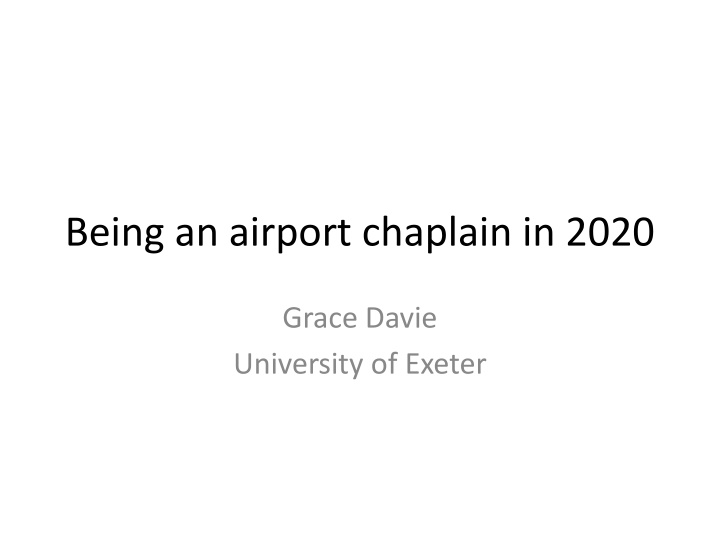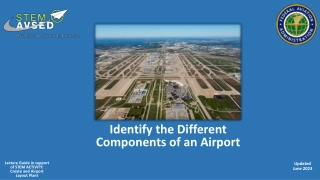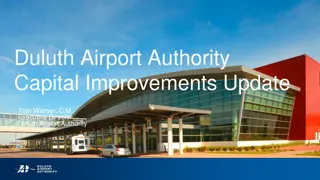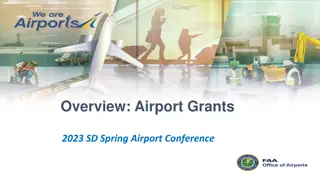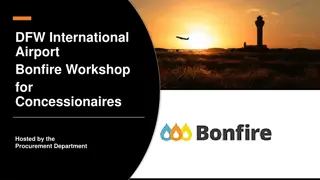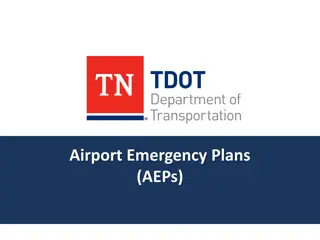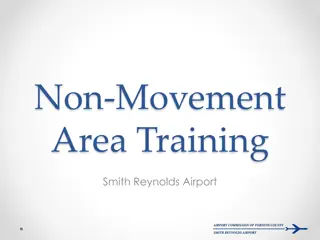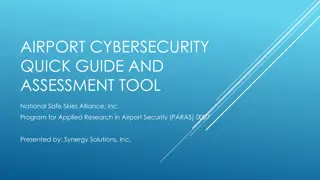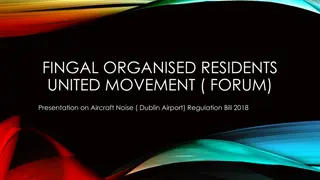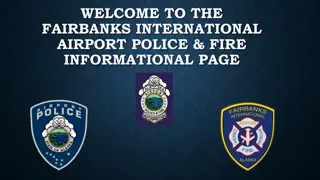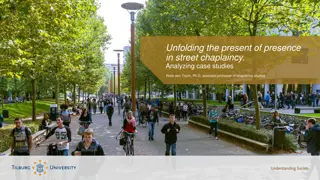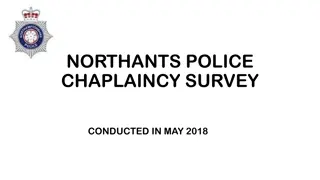Airport Chaplaincy in Modern Europe
Trained social science writer explores the role of airport chaplains in 2020, amidst COVID-19 challenges. Reflects on the correlation between modernization and secularization in Europe, delving into the complexities of religious diversity. Raises questions about Europe's secularity and its impact on global trends and philosophies of science.
Download Presentation

Please find below an Image/Link to download the presentation.
The content on the website is provided AS IS for your information and personal use only. It may not be sold, licensed, or shared on other websites without obtaining consent from the author.If you encounter any issues during the download, it is possible that the publisher has removed the file from their server.
You are allowed to download the files provided on this website for personal or commercial use, subject to the condition that they are used lawfully. All files are the property of their respective owners.
The content on the website is provided AS IS for your information and personal use only. It may not be sold, licensed, or shared on other websites without obtaining consent from the author.
E N D
Presentation Transcript
Being an airport chaplain in 2020 Grace Davie University of Exeter
The task To understand better the context in which airport chaplains work both in general and in the particular circumstances of COVID-19 GD I am trained in social science and have written extensively on religion in Britain, Europe and the wider world. I have worked on chaplaincy in higher education and the armed forces.
Finding a way in The International Panel on Social Progress see https://www.ipsp.org/ The chapter on religion within this Chapter 16 (of 22) Religions and social progress: Critical assessments and creative partnerships The back story to this project which introduces the sometimes tense relationship between the social sciences and the study of religion The assumed correlation between modernization and secularization unpack this
Religion in modern Europe The key question: is Europe secular because it modern, or is Europe secular because it is European? Two things are happening at once in (West) Europe at one and the same time Europeans are becoming both more secular and more religiously diverse the former is often seen as the privatization of belief; the latter enhances its public profile In short we talk more about something that we do less an ill-informed and ill-mannered public debate
Europe as an exceptional case The key question: will the rest of the world do tomorrow what Europe does today in terms of its relative secularity? Think about the US, Latin America, sub-Saharan Africa, the Muslim world in all its diversity, the Middle East, the sub- continent and the Pacific Rim and draw your own conclusions Then recall that the philosophies of science that underpin the social sciences emerge from the European i.e. the exceptional, or distinctive, case; this isn t helpful
Chapter 16 in the ISSP report 1 Starts from the premise that some 80 percent of the world s population affirms some kind of religious identification, a proportion that is growing rather than declining (Pew Research Center reports see below) The peak of secularity/ secularism 1970s Significant changes in the former Soviet Union and in China Plus differential birthrates Note throughout an emphasis on lived religion, rather than belief as such
Chaplaincy in this context The ambiguity of the role between a religious calling/ vocation (the chaplain) and a secular institution (in this case the airport or airline) in which you work Many (most?) people who fly will affirm some kind of religious affiliation To what extent is this appreciated by those who manage airports/ airlines? What happens when something goes wrong? Chaplains are first responders
Chapter 16 in the ISSP report 2 Emphasizing the significance of belief and practice in everyday lives and local contexts, we analyze the impact of religion and its relevance to social progress in a wide variety of fields: family, gender and sexuality diversity and democracy conflict and peace-making everyday wellbeing care for the earth
Further . . . We argue that researchers and policy makers pursuing social progress will benefit from careful attention to the power of religious ideas to motivate, of religious practices to shape ways of life, of religious communities to mobilize and extend the reach of social change, and of religious leaders and symbols to legitimate calls to action All of these, however, can be put to either good or ill, for which reason assessment of particular religions in specific contexts is essential
In conclusion Five interconnected themes: the persistence of religion in the twenty-first century the importance of context in discerning outcomes the need for cultural competence relative to religion the significance of religion in initiating change the benefits of well-judged partnerships A continuing need for critical but appreciative assessment and the demonstrable benefits of creative partnerships
2020 COVID-19 COVID and religion cause (scapegoats) and consequence Pastoral care and practical support from religious organizations, often in partnership with others impressive levels of activity Heightened anxieties A profound sense of loss of lives; of livelihoods; of assumptions; of expectations Restrictions on movement huge implications for the travel industry, for the individuals who work in this sector and those who make use of it
Back to chaplaincy Assessing the situation and finding a distinctive role in this How to mitigate the most painful aspects? What is/ is not possible? By whom? For whom? Over to you
The task To understand better the context in which airport chaplains work both in general and in the particular circumstances of COVID-19
Key references 1 Grace Davie and Nancy Ammerman https://blogs.lse.ac.uk/religionglobalsociety/2019/01/a- lived-situated-and-constantly-changing-reality-why-religion- is-relevant-to-the-pursuit-of-social-progress/ The final report of the IPSP Rethinking Society for the 21stCentury: Report of the International Panel for Social Progress. Cambridge: CUP, 2018 Chapters are also available on the IPSP website (https://www.ipsp.org/ see section on resources)
Key references 2 Pew Research Centre The Global Religious Landscape: A Report on the Size and Distribution of the World s Major Religious Groups as of 2010 , 2012 available at https://www.pewforum.org/2012/12/18/global-religious- landscape-exec/ The Changing Global Religious Landscape , 2017 available at https://www.pewforum.org/2017/04/05/the-changing- global-religious-landscape/ Grace Davie The military chaplain: A study in ambiguity , International Journal for the Study of the Christian Church, 15/1, 2015: 39-53.
